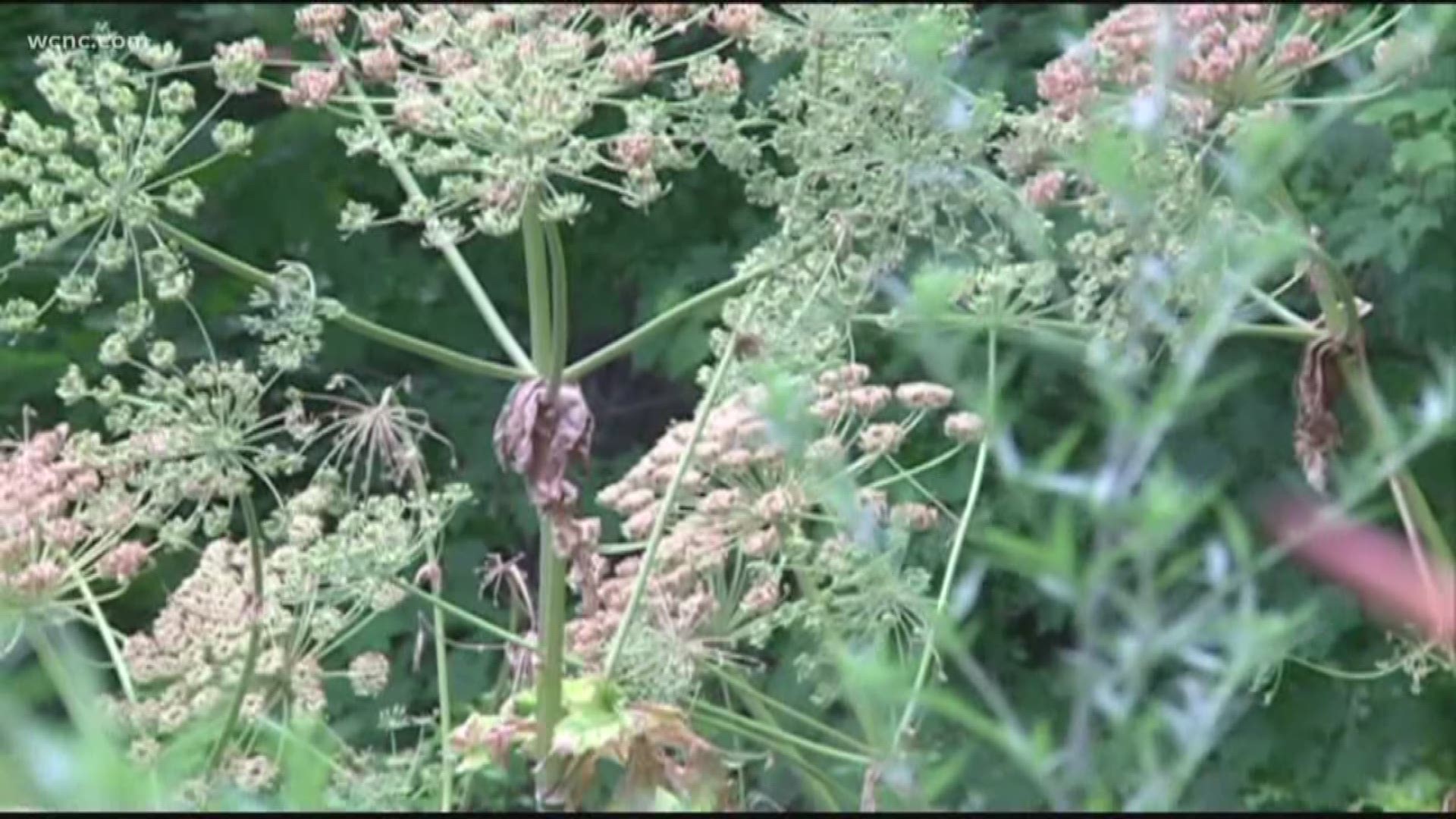CHARLOTTE, N.C. -- We’ve all heard of poison ivy, but another poisonous plant popping up in states across the southeast is making headlines this week for these painful blisters and scars.
It’s called Giant Hogweed.
Giant Hogweed is commonly found in vacant lots, on roadsides and riverbanks this time of year. It can grow up to 15 feet tall, with dark reddish blotches and coarse white hairs on its stem.
The most important thing to know is the sap of the Giant Hogweed can cause blindness and blisters if you get it in your eyes or skin. You can have those blisters for weeks and scarring can last years.
This week, there were reports of the plant in neighboring Tennessee and Virginia. It’s also been found in six areas across Blowing Rock in Watauga County since 2010. Plant specialists continue to use herbicides to stop the spread.
The North Carolina Department of Agriculture urged anyone who believes they were in contact with Giant Hogweed to immediately wash the infected areas with soap and water.
Experts said Queen Ann’s Lace is commonly mistaken for Giant Hogweed, and it is not harmful. If you are concerned about a plant, don’t hesitate to reach out to the agriculture department.

